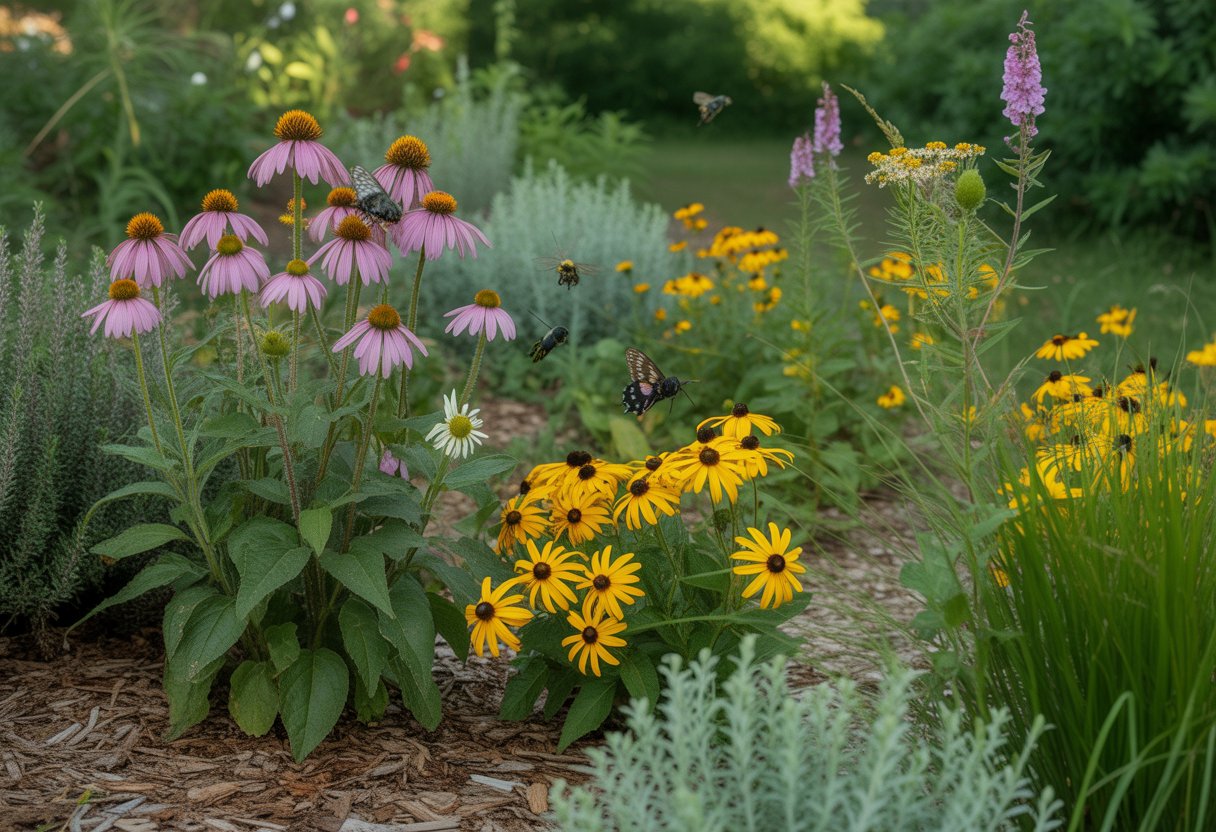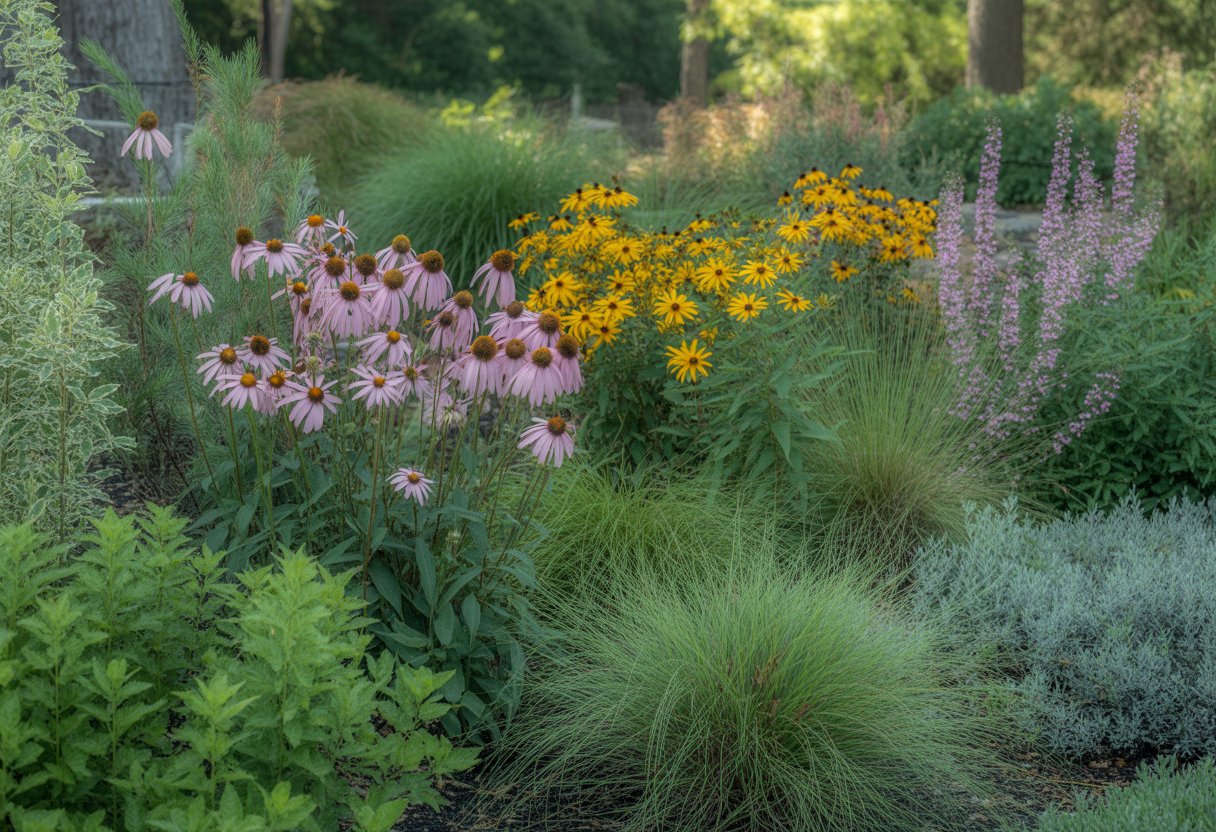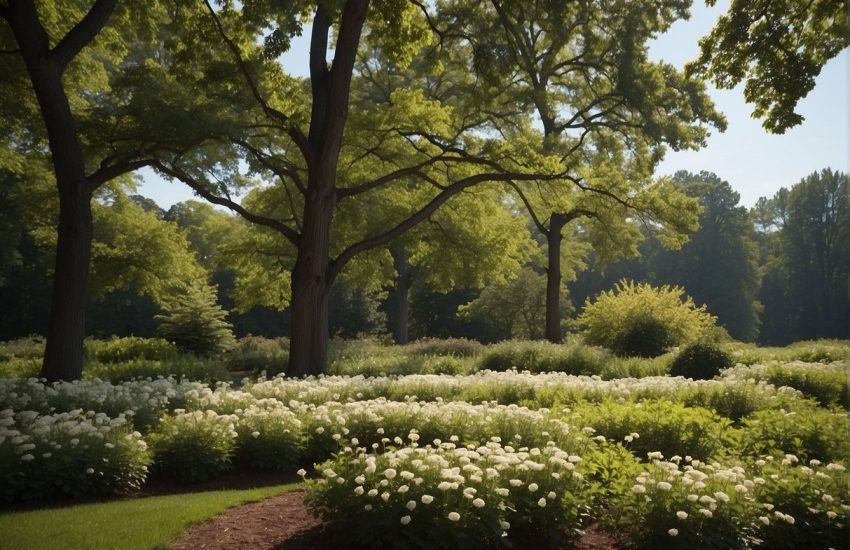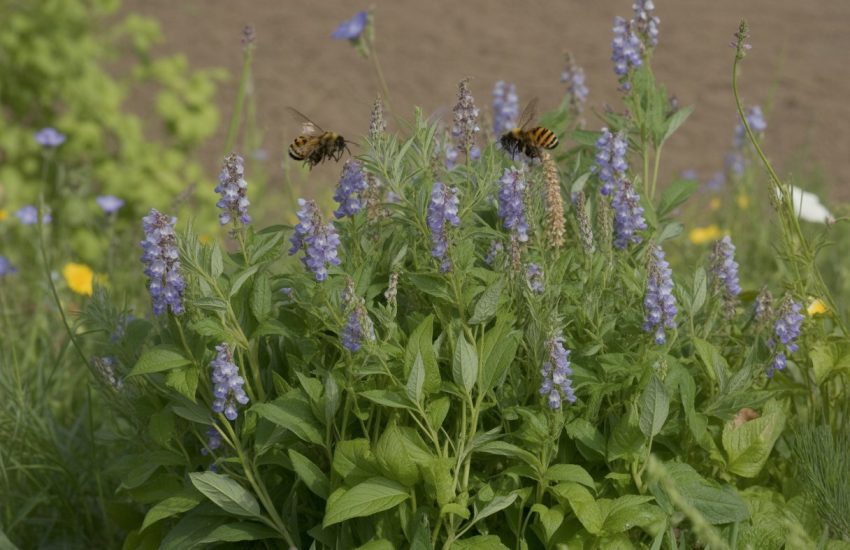Low Maintenance Native Plants Georgia for Easy, Sustainable Landscaping
Low maintenance native plants in Georgia make life way easier for gardeners who want beautiful yards without endless work. These plants already know how to handle the local climate and soil, so they’re tough and reliable for landscaping.
Choosing native species means you can skip a lot of extra watering, fertilizers, and pest control. That saves both time and resources.

Gardeners in Georgia have plenty of native options that just get on with growing—think black-eyed Susans, Georgia aster, and Eastern redbud. These plants help local wildlife and make gardens more sustainable.
Landscaping with native plants builds a balanced ecosystem and lets you spend less time fussing over your yard.
If you pick plants that fit Georgia’s environment, you’ll get good-looking gardens with less hassle. They’re both pretty and practical—kind of a win-win for anyone into sustainable landscaping.
Top Low Maintenance Native Plants for Georgia Gardens
Georgia’s native plants tend to perform well with little effort. Many grow happily in well-drained soils and USDA zone 8, plus they help out local wildlife and pollinators.
You’ll find varieties that handle drought, shade, and all sorts of soil quirks typical in Georgia.
Drought-Tolerant Perennials
Drought-tolerant perennials like Muhlenbergia capillaris (muhly grass) shrug off Georgia’s summer heat and dry spells. Muhly grass prefers full sun and well-drained soil, so it’s perfect for gardens that dry out sometimes.
Bottlebrush buckeye (Aesculus parviflora) is another solid choice. Its big white blooms show up in mid-summer and draw in pollinators.
This perennial shrub doesn’t mind heat or drought once it settles in.
Foamflower and native grasses also handle drought like champs. After their first year, they barely need extra water and still keep the ecosystem humming.
Shade-Loving Native Shrubs
Shade-tolerant shrubs like mapleleaf viburnum and mountain laurel really shine in Georgia’s shady gardens. Mapleleaf viburnum brings interest all year, with white flowers and berries that birds can’t resist.
Mountain laurel prefers acidic, well-drained soils, especially in wooded areas. Spicebush, with its yellow flowers, is another favorite and even serves as a host plant for butterflies.
Foamflower likes moist shade and puts out early spring blooms. You won’t need to prune much, and these shrubs just adapt to Georgia’s native soils without fuss.
Wildlife-Friendly Native Trees
Native trees boost wildlife habitats and make gardens more resilient. Flowering dogwood and eastern redbud show off spring blooms that pollinators love.
Both species handle USDA zone 8 and don’t get picky about soil.
Southern sugar maple deals with Georgia’s heat and offers shade, plus food for birds and mammals. Carolina buckthorn, a smaller native tree, gives wildlife year-round cover and winter berries.
Devilwood, which is kind of shrub-like, supports local birds with its thick leaves and berries. Picking native trees keeps maintenance low and helps local ecosystems.
Essential Care and Maintenance Tips
You’ve got to pay attention to soil health, watering, and weed control if you want your low maintenance native plants to thrive in Georgia. Keeping up with these basics helps your plants stay healthy and avoids most pest and disease headaches.
Soil Preparation and Moisture Management
Native plants in Georgia do best in well-drained soil that matches their soil type—usually sandy or loamy. Test your soil’s pH and fertility before planting to see if you need to add compost or other amendments.
Keeping soil moisture consistent matters, especially while plants get established. Most native plants can handle drought, but they appreciate soil that holds some moisture without turning swampy.
Try not to let things get too soggy, or you’ll risk root rot and fungus.
Effective Watering Practices
Different species want different amounts of water, but most native plants like deep, occasional watering instead of daily sprinkles. That way, roots grow deeper and the plants get tougher against drought.
When rain is scarce or humidity is high, tweak your watering to avoid drowning or stressing the plants. Watering in the early morning keeps evaporation low and gives leaves time to dry out, which helps prevent disease.
Mulching and Weed Control
Mulch around your native plants to keep soil moisture in, control temperature swings, and cut down on weeds. Organic mulches like pine bark or shredded leaves break down over time and make the soil better.
Pull weeds regularly so they don’t steal water or nutrients. Mulch also blocks weed seeds from sprouting, but don’t pile it too thick—2 to 3 inches is good. Too much mulch can smother roots or attract pests, so there’s a balance.
Creating Wildlife Habitats and Supporting Pollinators

Native plants form the backbone of Georgia’s ecosystems, giving food and shelter to all kinds of critters. They encourage diverse plant communities and keep pollinators and wildlife coming back.
Designing a Pollinator Garden
A pollinator garden in Georgia should have a mix of native plants like butterfly weed and blazing star. These flowers pump out nectar and pollen that bees, butterflies, and others need.
Coral honeysuckle makes a great native vine, drawing in hummingbirds and a crowd of pollinating insects. If you stagger bloom times, you’ll have flowers from spring through fall, so pollinators always have something to eat.
Designing your garden with sunny spots and dense plantings creates microhabitats for pollinators. Skipping pesticides helps these helpful insects stick around, which is honestly better for everyone.
Attracting Birds and Beneficial Insects
Native plants do wonders for wildlife, drawing in birds, ants, and beneficial insects that keep pests in check. Dense native shrubs offer nesting and foraging spots birds need.
A variety of plants means you’ll also support lots of different insects, keeping the ecosystem balanced. Coral honeysuckle, for example, feeds birds with its berries and pollinators with its flowers.
If you plant in clusters instead of single plants, you’ll create better habitats. Wildlife likes to settle in spaces like that, and it just makes the whole environment healthier.
Resources and Plant Selection Guidance

Picking the right native plants means you need solid info and a good sense of what your site can handle. Several organizations and expert groups in Georgia can help you match plants to your landscape.
Utilizing Local Expertise and Organizations
The University of Georgia (UGA) Cooperative Extension has a ton of resources on native plants and landscaping. Their plant sales often feature things like red buckeye and Florida anise, which do well in Georgia’s Zone 8 and a range of soils.
The Georgia Native Plant Society runs workshops and shares plant lists for different regions. These events help you spot native understory plants and perennials that work for home gardens, plus tips on mixing natives with turfgrass or veggies like blueberries and onions.
Local forestry departments and camps also offer advice for picking plants that can handle Georgia’s light—from sunny coastal areas to shady woods. These groups really focus on health, sustainability, and making landscapes family-friendly.
Matching Plants to Site Conditions
Choosing native plants really means getting to know your site—think soil type, sun patterns, and how soggy or dry things get. For instance, rhododendron just loves part shade and acidic dirt.
Meanwhile, corn and blueberries want all the sun they can get and soil that drains quickly. You can’t just guess and hope for the best.
Along the coast in Georgia, salt spray is a big deal. Plants like Florida anise and those tough salt-tolerant grasses handle it way better than the average turfgrass.
If you’re further inland, maybe close to the Alabama or South Carolina line, it makes sense to go for taller understory plants. They throw some shade and mix up the habitat a bit.
Honestly, it’s smart to test your soil’s pH and texture. I usually suggest checking with local extension offices or digging into online plant databases.
When you match native species to your yard’s quirks, you end up using less water and doing way less yard work. And who doesn’t want a resilient, low-fuss border or lawn alternative?


